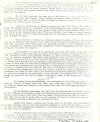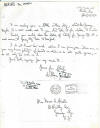| Home
Click to enlarge. The first Dutch settlement in the New World was at Communipaw, about 1615—before the landing of the Mayflower. It was from here that colonisation went out to the island of Manhattan across the river; so that, in reality, New York was a colony of Jersey City originally. For the Hudson estuary, Jersey City is the "mother city," from which, if we are to follow the original meanings of words, Jersey City would be the real "metropolis" of that region. To the Dutch settlers, the west side of the Hudson was "the hills"—Bergen in Dutch. Names like North Bergen, Bergen Square, and Bergen Avenue, perpetuate this name around Jersey City; and, in fact the name of Bergen was formerly given to the village which included the Journal Square district. After the restoration of English monarchy in 1660, King Charles II decided to assert his alleged claim of "discovery" to the New Netherlands, and, before gaining possession, assigned the ownership of that piece of real estate to his brother James (later King James II, but then entitled Duke of York and Albany). Duke James, in turn, assigned part of his claim, a strip between the Hudson and the Delaware, to Lord Carteret of the Isle of Jersey in l663. (Note: The Isle of Jersey was originally called Caesarea, of which its present name is the modern French version. That island is off the coast of Normandy, and it was from there that both Caesar and William the Conqueror started on their invasion of Britain; therefore the Jersiais claim that England is Jersey's possession, and not vice versa. The island was named for Caesar.) Lord Carteret, in addition to buying the land from Duke James, then went to Holland and bought it over again from the Dutch. He brought a colony of English over to his land, leaving his wife, Lady Elizabeth Carteret, in charge of actual governing of the colony, the English colonists’ town being named Elizabeth after her. Her headquarters was a house in that town which was then known as "The "White House"—possibly it was from the New Jersey house that the one in Washington has inherited that title. Elizabeth Carteret appears to have been the first woman governor of any province of European settlement. The arrangement the Carterets set out provided for a representative assembly in an advisory capacity—a comparatively new thing in that time, as Virginia's House of Burgesses had not yet attained real recognition, and New York did not acquire any form of representative government till some 25 years later. The Carterets also decreed universal tolerance of all religious beliefs on an equal basis; which was more than England had at the time. The colony was named for the Isle of Jersey, a name still borne by New Jersey and by Jersey City. The Andros dictatorship (1685-89) took possession of New Jersey in 1688. It was ended by a revolt in Boston (April l8, l689), and in New York (June 6, 1689). In this case, the Carteret regime was restored in New Jersey while New York still remained loyal to the dictatorship. In the American Revolution, New York City was headquarters for British forces and for the Tories in this country, while New Jersey was the chief point from which rebels struck at the forces in New York. After the peace, United States was able to annex New York City, and it was in Jersey City (at the crossing of Grand and Washington Streets) that General Washington dismissed the Continental army. Jersey City played a certain part in the start of the Civil War; for there, at the B. & O. Station, started the first Northern regiment to start for the South, on April 19, 1861 (the 6th Massachusetts regiment); a few hours later, the first bloodshed of the war took place in Baltimore. Several inventions have been made in Jersey City; particularly some of Edison’s inventions, as he had, for a while, a laboratory in the Marion section of the city. There, on some trial tracks running close to the Pennsylvania R. R. tracks, were operated the first workable electric cars; and there much of the experimenting for electric lights was done.
|

